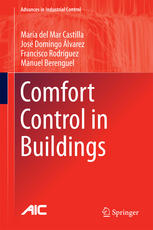

Most ebook files are in PDF format, so you can easily read them using various software such as Foxit Reader or directly on the Google Chrome browser.
Some ebook files are released by publishers in other formats such as .awz, .mobi, .epub, .fb2, etc. You may need to install specific software to read these formats on mobile/PC, such as Calibre.
Please read the tutorial at this link: https://ebookbell.com/faq
We offer FREE conversion to the popular formats you request; however, this may take some time. Therefore, right after payment, please email us, and we will try to provide the service as quickly as possible.
For some exceptional file formats or broken links (if any), please refrain from opening any disputes. Instead, email us first, and we will try to assist within a maximum of 6 hours.
EbookBell Team

4.4
52 reviewsThe aim of this book is to research comfort control inside buildings, and how this can be achieved through low energy consumption. It presents a comprehensive exploration of the design, development and implementation of several advanced control systems that maintain users' comfort (thermal and indoor air quality) whilst minimizing energy consumption. The book includes a detailed account of the latest cutting edge developments in this area, and presents several control systems based on Model Predictive Control approaches. Real-life examples are provided, and the book is supplemented by illustrations, tables, all of which facilitate understanding of the text.
Energy consumption in buildings (residential and non-residential) represents almost the half of the total world energy consumption, and they are also responsible for approximately 35% of CO2 emissions. For these reasons, the reduction of energy consumption associated with the construction and use of buildings, and the increase of energy efficiency in their climatic refurbishment are frequently studied topics in academia and industry. As the productivity of users is directly related to their comfort, a middle ground needs to be found between comfort of users and energy efficiency. In order to achieve this, it is necessary to develop innovation and technology which can provide comfortable environments with minimum energy consumption. This book is intended for researchers interested in control engineering, energy and bioclimatic buildings, and for architects and process control engineers. It is also accessible to postgraduate students embarking on a career in this area, particularly those studying architecture.